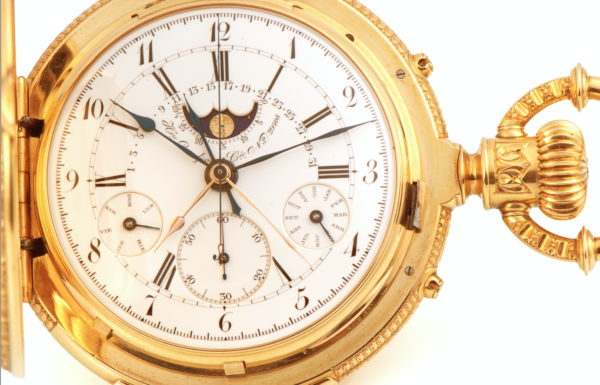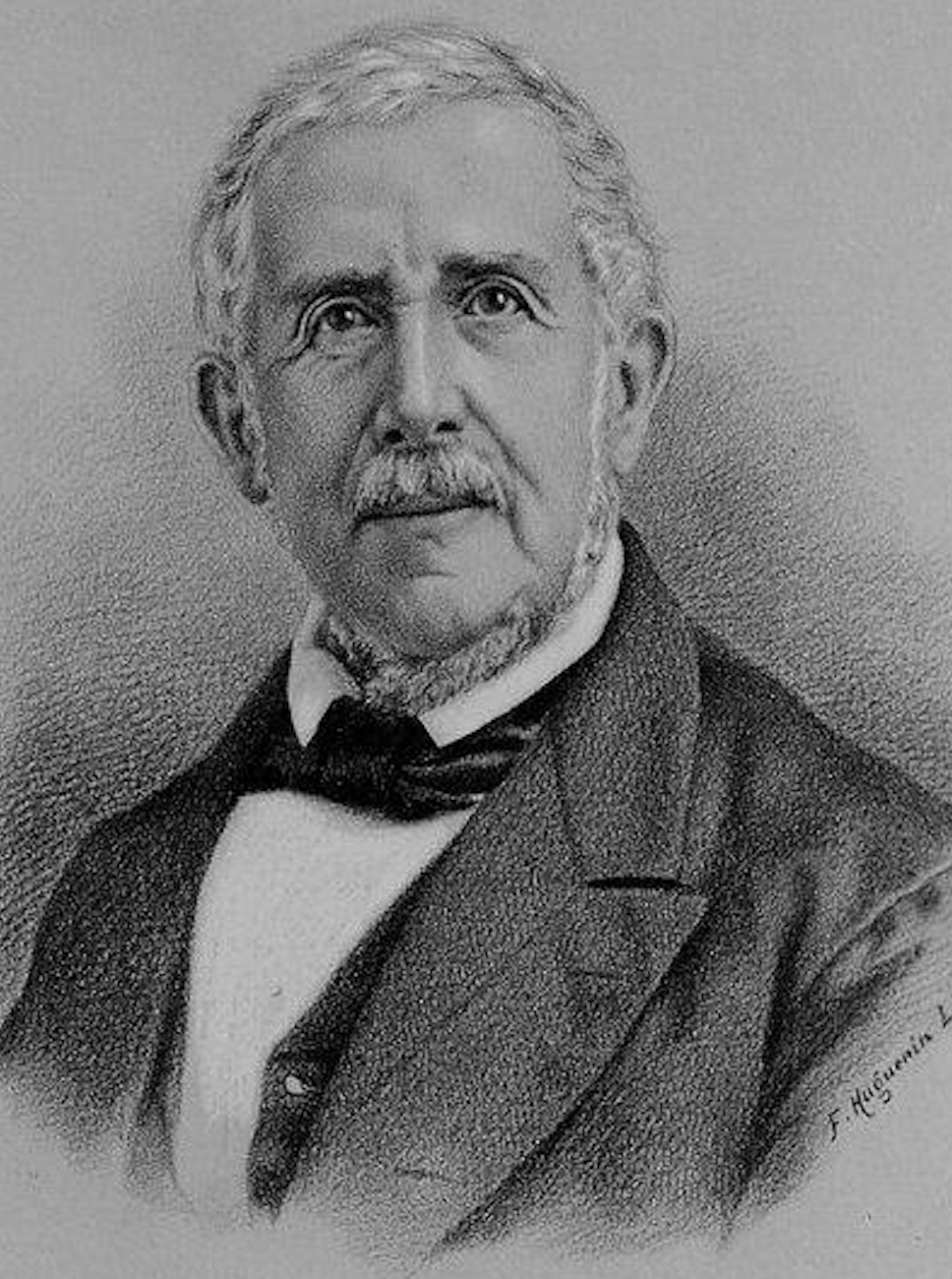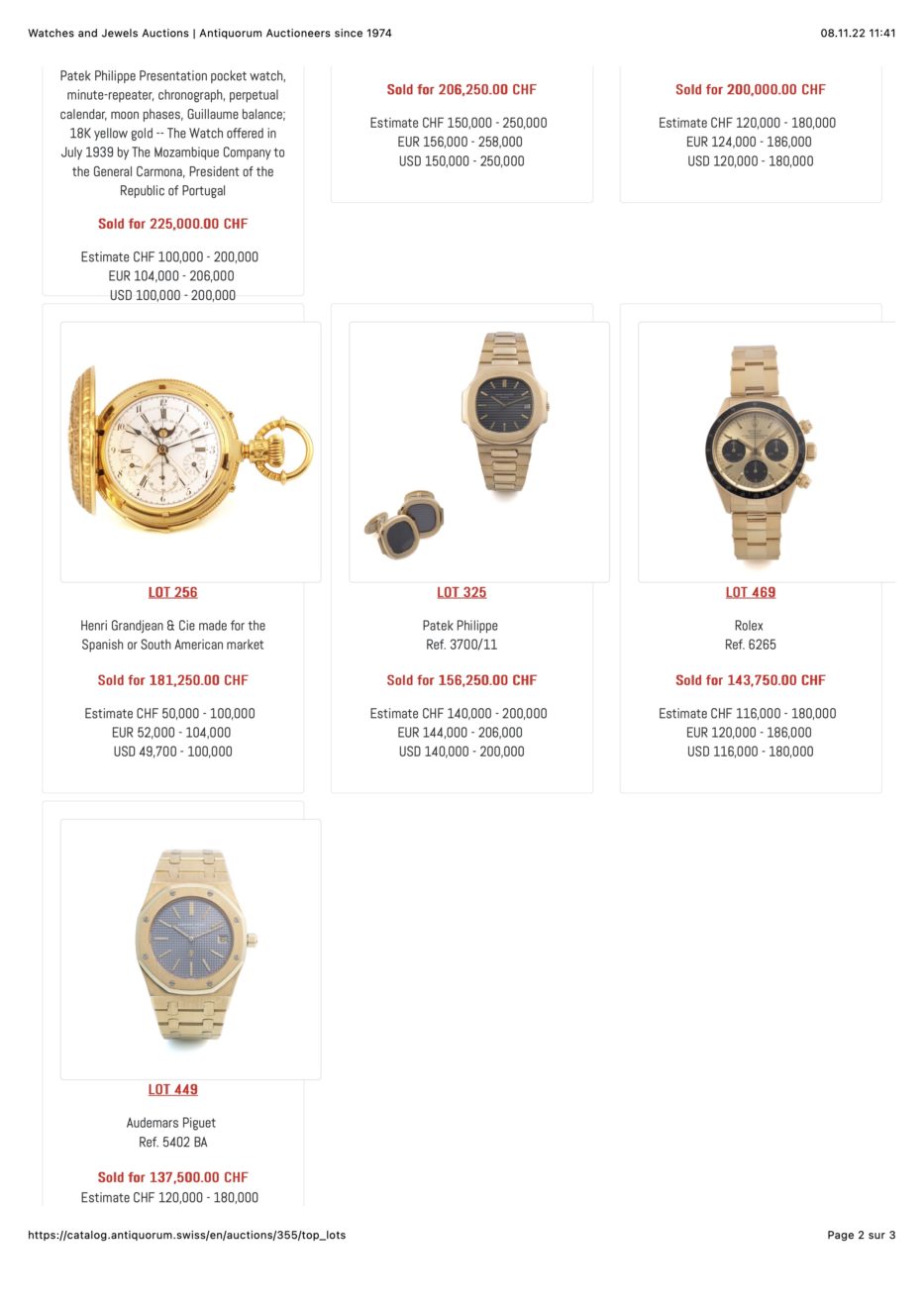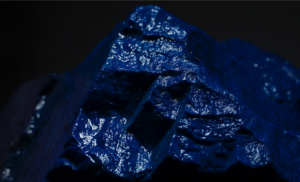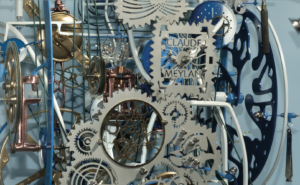It rocked! This gold pocket watch with eight complications rarely combined in a single piece is one of the most complex ever made by Henri Grandjean. This chronometric treasure was back at auction at the Beau Rivage in Geneva on 6 November 2022. A perfect opportunity to highlight one of Switzerland’s major master watchmakers, and to tickle the guardians of Swiss museum collections.
Joël A. Grandjean, JSH® Magazine & Swiss Watch Passport’s Editor in chief
Insta SWP | Insta JSH® | Facebook | Twitter | Linkedin
{Updated on 7 November 2022} Few Swiss watchmakers have had such an impact on their times, on the history of chronometry, on the history of their municipality, Le Locle, and even, as a National Council member, on the history of Switzerland. The timepiece that has come under the Antiquorum spotlight in 2022 concentrates eight watchmaking complications in its solid gold case of rare finesse, the combination of which embodies absolute expertise: retrograde perpetual calendar (fly-back), chronograph, moon phases, quarter repetition by two hammers on two gongs, dual time zone.
This pocket watch is priceless
Its value is far beyond the fluctuating vagaries of a market that offers and demands according to elusive and unexplainable trends. Astonishingly, its success seems to corroborate a resurgence in interest in particular pocket watches. Thus, as its impressive performance at the Geneva auction in early November 2022 seems to confirm that its status as a heritage watchmaking masterpiece exceeds all financial matters. ll the more so as it is in an exceptional condition both in terms of conservation and functioning. It seems that the Château des Monts or the MIH, namely the Musée d’horlogerie du Locle and the Musée International d’Horlogerie de la Chaux-de-Fonds, whose budgets were unfortunately not in the running, were desperately looking for it.
This Henri Grandjean pocket watch is definitively an essential part of the universal watchmaking heritage
Indeed, Antiquorum, in summing up this exciting autumn 2022 sale, with a respectable total of CHF 8.833 million, has selected this rare timepiece as one of its top ten most valuable lots.
This ranks Henri Grandjean 143 years after his death among the most prestigious, alongside Rolex, Patek Philippe, Audemars Piguet and A. Lange & Söhne. A real achievement
A builder: from the Observatory to Unesco
Watchmaker Henri Grandjean was an extraordinary builder. We have him to thank for the erection of the Neuchâtel Observatory, a watchmaking institution to which the most prestigious names still lay claim and which, from 1931 until recently, provided the whole of Switzerland with radio time. He was also the architect of the reference point for precision in Le Locle (Cité de la Précision) thanks to the cable he had laid between the Observatory and the watchmaking school in Le Locle, which he also had built. Finally, among other architectural and sectorial footprints that he has left, we owe him the building of the Quartier de l’An-Neuf (today the Quartier du Progrès), which in 2009 enabled Le Locle to join the UNESCO application for the registration of the Urbanisme Horloger as a world heritage property in La Chaux-de- Fonds. (See the official file, page 215).
In the city of Le Locle, right on the edge of the Quartier du Progrès, a street is named after him. Although his first name is misspelled there – with a “y” instead of an “i” – his memory is still alive. At the time, when this great chronometer-maker delivered his models to the markets of the British Empire, including India, he would put “Henry” on the dials. Similarly, he would sometimes sign “Enrique” for his watches delivered to South American markets.
Ultimate precision quest, the “Delight of the Captains”
When back from South America in his early thirties, where he had gone to manage the horological comptoirs his father David-Henri Grandjean had set up in Peru, Bolivia and Brazil, Henri Grandjean is said to have declared, “We are going to make precision watches like the English.” Indeed, the navigators of the national navies of those days praised the remarkable accuracy of the marine chronometers manufactured by Henri Grandjean & Cie, on-board instruments that they had christened ‘Delights of Captains’. It is true that the watchmaker from Le Locle had founded, with a descendant of Jean-Richard and Ulysse Nardin, the “Swiss Marine Chronometer Industry”, a mutual supply and distribution structure.
Any major Collector in the world surely has his Henri Grandjean”, use to claim Helmut Crott, renowned expert and father of watch auctions
Few people, in fact, since it is estimated that between 150 and 200 pieces were manufactured by Henri Grandjean during his lifetime. Some of these are to be discovered in the main watchmaking museums. As in Le Locle, where the Château des Monts even has a “Henri Grandjean” archive of historical documents.
Inventions and chronometry
As an innovative spirit, Henri Grandjean – also written GrandJean – experimented with various procedures: screw or mass balances, escapements with pivoted or spring detents, circular or spherical balance springs. Although none of these systems seemed better than another, he insisted on the terminal curves of the balance spring, as calculated by the mathematician Edouard Phillips (1821-1889).
Before Nobel Prize-winning physicist Charles-Edouard Guillaume (1861-1938), he planned to use a nickel alloy for the balance springs. Working on different calibres, Henri Grandjean showed that the dimension of a movement does not determine its precision. While his favourite calibre is a 56 lignes with two plates, with a power reserve of fifty-six hours, he also made small marine watches, up to 26 lignes. He is known for his sense of technical simplification and for the indisputably high level of his finishings.
Henri Grandjean, 8 complications pocket watch
Perpetual Calendar, GMT, Chronograph, Quarter repeater, Moon phases…
18K Multi-coloured gold (yellow, pink, green and white), hunting-case, keyless- winding, round-shaped, large, heavy and impressive, pocket watch, made for the Spanish or South American market, with subsidiary seconds at 6 and eight horological complications.
Functions and complications
(Quantième Perpétuel, GMT, Chronographe, Répétions des quarts, Phases de Lune…)
Quarter-repeater by two hammers on two steel gongs activated by the slide located on the case-band at 6 o’clock.
1/5 second chronograph activated by the single rectangular push- piece located on the edge of the bezel at 6 o’clock, with outer ring.
Instantaneous perpetual calendar, Retrograde (fly-back) date of the month, half-circle graduation at 12 o’clock with index
Month of the year, subsidiary dial at 4 o’clock; indications given in Spanish
Age and phases of the moon, subsidiary dial, graduated from 0 to 291⁄2, and aperture at 12 o’clock
GMT, hours and minutes of a second time zone, concentric yellow gold hands, time-setting by push-pin on the right side of the pendant; the repeater mechanism is indexed to this set of hand.
Caliber 20”’ (lines)
20’’’ movement, nickel-plated, “fausses côtes” decoration, 37 jewels, going barrel, wolf-teeth winding wheels, gold train of wheels, straight-line equilibrated lever escapement, cut bimetallic compensated balance, blued steel hairspring with terminal curve, polished steel index-regulator; repeater work on the main plate, under the dial; chronograph work on the top plate.
Dial
White colour enamel dial, with suspended “Breguet” numerals; blued steel “Spade” hands (time-setting by push-pin on the left side of the pendant); inner ring with radial Roman numerals for the dual-time.
Four-coloured case
Five body massive “bassine et filets, carrure ronde” case, profusely chased and engraved overall with elaborate foliage; cover and case-back with four colour high- relief decoration of iris flowers cartouche, scrolls and a mask; engraved and guilloché (engine-turned) gold cuvette (dome); additional glazed cuvette to protect the movement




